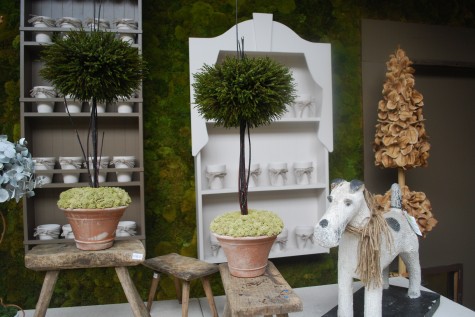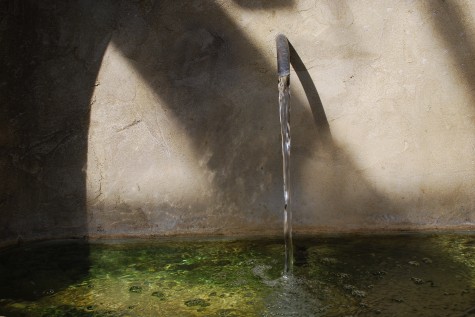 Our weather has taken a decidedly balmy turn the past few days; we have temps in the fifties. I expect it will take a turn for the worse sooner or later, but today I am enjoying the sun. The cold, snow and ice of a Michigan winter is usually bearable, but the grey could make you black out. I am always ready for some sun. I was outside today with no coat, enjoying that sun. Even indoors, the light is brighter and stronger. The days are longer. I welcome the reappearance of the sun. The season is changing-delightful.
Our weather has taken a decidedly balmy turn the past few days; we have temps in the fifties. I expect it will take a turn for the worse sooner or later, but today I am enjoying the sun. The cold, snow and ice of a Michigan winter is usually bearable, but the grey could make you black out. I am always ready for some sun. I was outside today with no coat, enjoying that sun. Even indoors, the light is brighter and stronger. The days are longer. I welcome the reappearance of the sun. The season is changing-delightful.
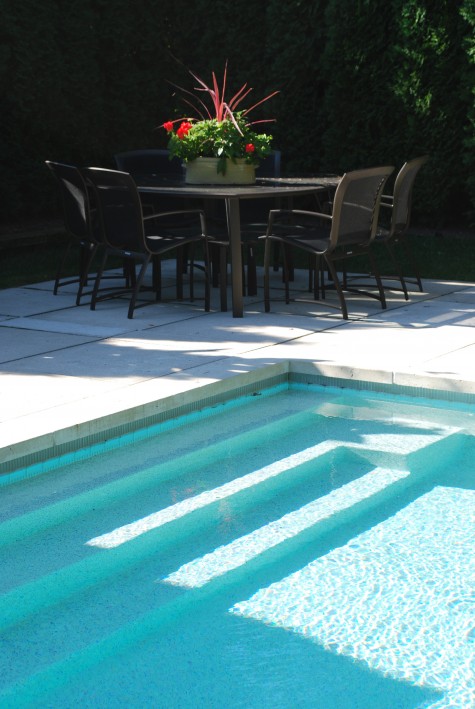
Sunlight is essential to living things. Books are written and lists made of those plants that tolerate shade. The unspoken implication here-nothing living loves the dark. When I was young, I killed many a shade tolerant perennial thinking it was shade loving. I am in discussion with a client now about a design for a pool, so there has been much talk about sun and games. Sunny and shady. Imagine your life long enough to see what, where, and how you want to live outdoors.
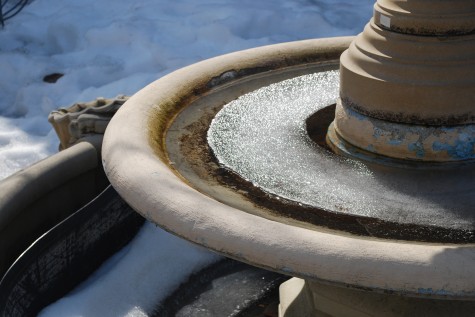 Water one observes can be sited in a number of places. Shadier locations will provide perfect conditions for mosses and other water loving plants to take hold. Shading 75% of the surface of a pond will not only provide refuge for fish, but it will make the job of balancing the pond ecologically much easier. For those that have an aversion to cleaning a pond mechanically, an understanding of the role of the sun is essential. Read up. A fountain burbling in the shade can be peacefully overrun with everything that blows in and takes up residence-beautiful. Sunny water-don’t you want to get in?
Water one observes can be sited in a number of places. Shadier locations will provide perfect conditions for mosses and other water loving plants to take hold. Shading 75% of the surface of a pond will not only provide refuge for fish, but it will make the job of balancing the pond ecologically much easier. For those that have an aversion to cleaning a pond mechanically, an understanding of the role of the sun is essential. Read up. A fountain burbling in the shade can be peacefully overrun with everything that blows in and takes up residence-beautiful. Sunny water-don’t you want to get in?
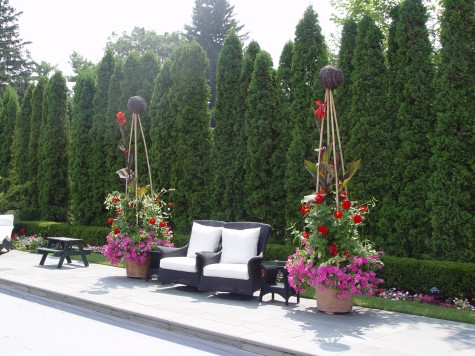
Pools for swimming are another topic altogether. The right siting for any activity outdoors-look to the sun. I want to swim in the sun-water is cold, even in midsummer. Enjoying a sunny July day at pool side-fine, for a while. Watching kids play in a pool, or having lunch outdoors-a shady spot is a good idea.
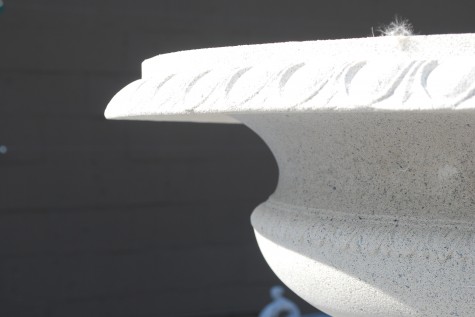 White or light surfaces poolside will reflect sunlight, and be cooler for bare feet. Reflected heat and light will dry you off in short order. Drying off in the sun-like being on vacation. If you are old enough to remember putting sheets on a bed that have been sun dried on a clothesline-this a simple and exquisite pleasure. Dark surfaces absorb the heat of the sun, and radiate that heat. A shady location sporting dark surfaces may be a late summer refuge. Hard surfaces take a long time to heat up, and a long time to give up their heat. Plan for some, if it is your idea to be outside, late fall.
White or light surfaces poolside will reflect sunlight, and be cooler for bare feet. Reflected heat and light will dry you off in short order. Drying off in the sun-like being on vacation. If you are old enough to remember putting sheets on a bed that have been sun dried on a clothesline-this a simple and exquisite pleasure. Dark surfaces absorb the heat of the sun, and radiate that heat. A shady location sporting dark surfaces may be a late summer refuge. Hard surfaces take a long time to heat up, and a long time to give up their heat. Plan for some, if it is your idea to be outside, late fall.
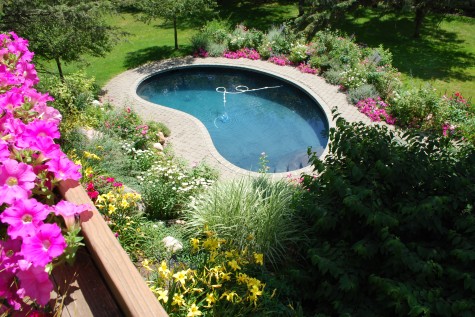
Pools with dark interior surfaces reflect light. A swimming pool that doubles as a reflecting pool has a long season of use. Dark surfaced pools absorb the energy from the sun-the water will be warm, but the bottom of the pool is usually obscured. Cathy’s pool is very unusual, as it can be seen from far above; she has a view of warm water in a dark surfaced pool, to the bottom. The interior color of her pool contrasts sharply with the surrounding garden. She gets as much from looking at her pool as being in it. The big idea here? Make moves that deliver at different times, in different seasons.
 This handmade Italian pot is indoors until the weather reliably warms. Nevertheless, its detail is brought to life by the light of the spring sun streaming in the window. The surfaces closest to the light are white; the shadows are black. What goes on in between is a matter between you and your designer. Or between you and your gardening self.
This handmade Italian pot is indoors until the weather reliably warms. Nevertheless, its detail is brought to life by the light of the spring sun streaming in the window. The surfaces closest to the light are white; the shadows are black. What goes on in between is a matter between you and your designer. Or between you and your gardening self.
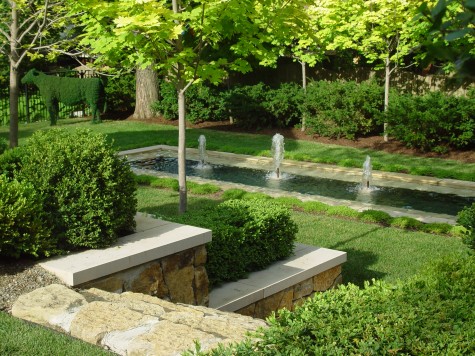
My fountain is 26 feet long-of course the conditions are different end to end, and they change, given the course of the day. Mostly sunny is the outlook for my home water-I am ready for it when I get home at the end of the day. On moody days, it is enough to just watch it. This post may seem to be a rambling late winter stream based on a lot of thoughts; you are right about that. I am waking up to lots of design work needing spring readiness. But this warm March day, I am also dreaming about a warm summer’s day, and some water.
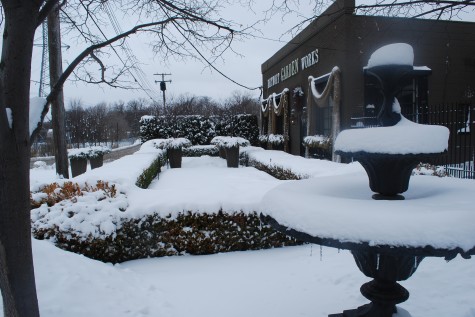 Though the shop garden is very much frozen in time, there is work under way, under ground, in anticipation of spring. We planted 2600 tulips in this garden last fall. Each and every one of those bulbs is programmed to wake up and grow, come the spring thaw. Everything needed to grow and bloom is stored and waiting inside that bulb for that moment when the switch flips. Though it seems hard to believe, tulip bulbs do not freeze solid through and through. Planted some 8″ below the surface, they spend the winter chilled to right around 32 degrees. They need that hibernation time to properly spring forth.
Though the shop garden is very much frozen in time, there is work under way, under ground, in anticipation of spring. We planted 2600 tulips in this garden last fall. Each and every one of those bulbs is programmed to wake up and grow, come the spring thaw. Everything needed to grow and bloom is stored and waiting inside that bulb for that moment when the switch flips. Though it seems hard to believe, tulip bulbs do not freeze solid through and through. Planted some 8″ below the surface, they spend the winter chilled to right around 32 degrees. They need that hibernation time to properly spring forth.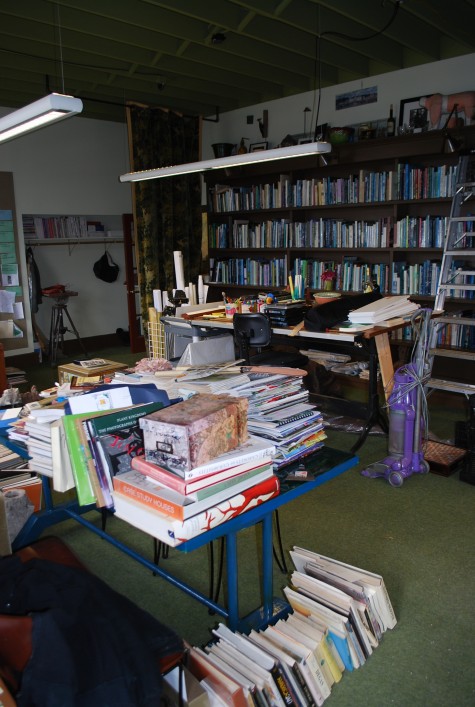 Inside the shop, it takes plenty to get ready for spring. We do a spring cleaning in February; once spring actually comes, there is no time for that. I do not mind that I have missed this part at all. Steve took every book off the library shelves, dusted them, cleaned the entire space, repainted the room, and put it all back together-all I had to do was choose the colors. Green for the walls of course-but a very light green this time. The room looks light and airy now. For the shelves and trim-what I call Belgian chocolate.
Inside the shop, it takes plenty to get ready for spring. We do a spring cleaning in February; once spring actually comes, there is no time for that. I do not mind that I have missed this part at all. Steve took every book off the library shelves, dusted them, cleaned the entire space, repainted the room, and put it all back together-all I had to do was choose the colors. Green for the walls of course-but a very light green this time. The room looks light and airy now. For the shelves and trim-what I call Belgian chocolate.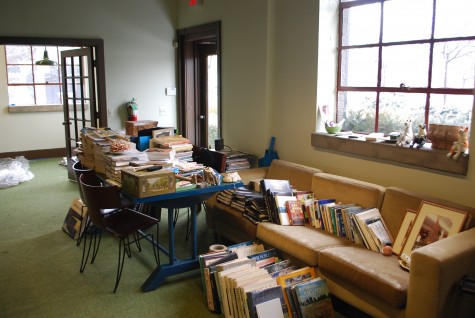 The floor of my office is courtesy of Flor-the company that makes carpet tiles in all kinds of colors and textures. This series is called house pet-it is so easy to pull up a stained square, and replace it with a new one. Gardening being the dirty business that it is, I think I am due for all new squares. Having a project indoors helps the winter fly by.
The floor of my office is courtesy of Flor-the company that makes carpet tiles in all kinds of colors and textures. This series is called house pet-it is so easy to pull up a stained square, and replace it with a new one. Gardening being the dirty business that it is, I think I am due for all new squares. Having a project indoors helps the winter fly by. 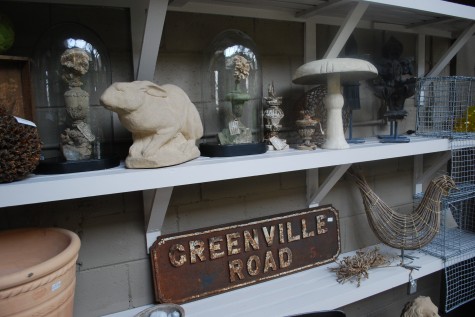
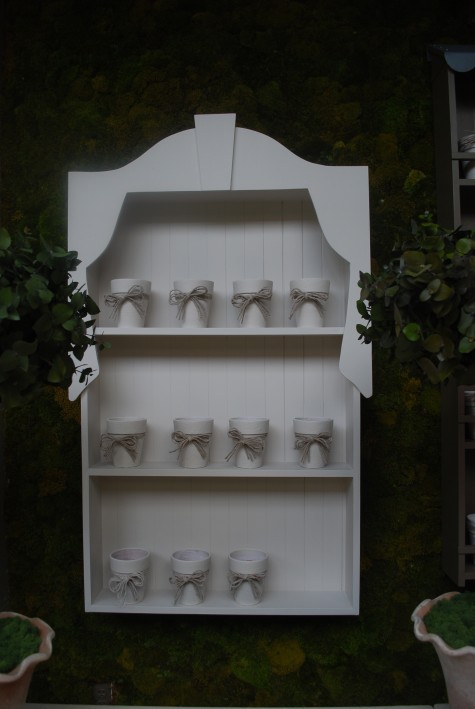 The auricula theatres got new outfits as well. The best fun was finishing the terra cotta pots. Each pot was primed in UGL basement waterproofing paint. This gave the pots a substantial gritty texture. This also keeps the top coat of paint from peeling off, once the pot is a home for wet soil. Each pot got a jute knot or bow. With the finish coat of ivory paint we soaked the bows in thinned paint; I like the look. I could see these pots planted with small growing herbs-or succulents-or even miniature ferns.
The auricula theatres got new outfits as well. The best fun was finishing the terra cotta pots. Each pot was primed in UGL basement waterproofing paint. This gave the pots a substantial gritty texture. This also keeps the top coat of paint from peeling off, once the pot is a home for wet soil. Each pot got a jute knot or bow. With the finish coat of ivory paint we soaked the bows in thinned paint; I like the look. I could see these pots planted with small growing herbs-or succulents-or even miniature ferns. 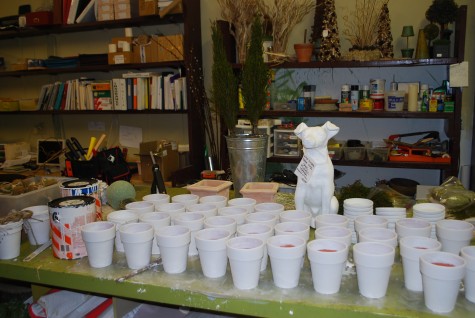 They layout table was handy for painting the pots. I could never again do without a table at a height comfortable for me to stand and work. This we made with a 4 by 8 foot sheet of exterior grade plywood. The top is held up by a pair of shelves four feet deep. These shelves hold long blueprints that I need to store.
They layout table was handy for painting the pots. I could never again do without a table at a height comfortable for me to stand and work. This we made with a 4 by 8 foot sheet of exterior grade plywood. The top is held up by a pair of shelves four feet deep. These shelves hold long blueprints that I need to store.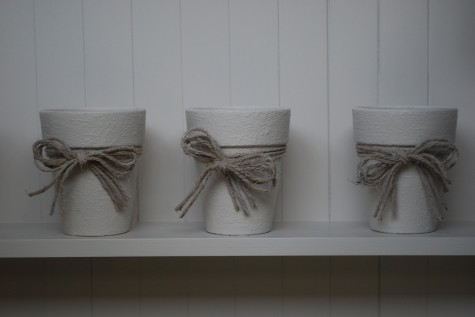 The little pots look great. Machine made terra cotta pots can be finished in so many ways, when you tire of that orange clay. This shape is called a rose pot-they are taller than standard terra cotta pots. They are great for growing plants with long root runs. Bareroot roses that are potted up for sale at nurseries are generally on the tall side. Large rose pots are also great for growing tomatoes. Rose pot and long tom are interchangeable common names for pots taller than they are wide.
The little pots look great. Machine made terra cotta pots can be finished in so many ways, when you tire of that orange clay. This shape is called a rose pot-they are taller than standard terra cotta pots. They are great for growing plants with long root runs. Bareroot roses that are potted up for sale at nurseries are generally on the tall side. Large rose pots are also great for growing tomatoes. Rose pot and long tom are interchangeable common names for pots taller than they are wide. 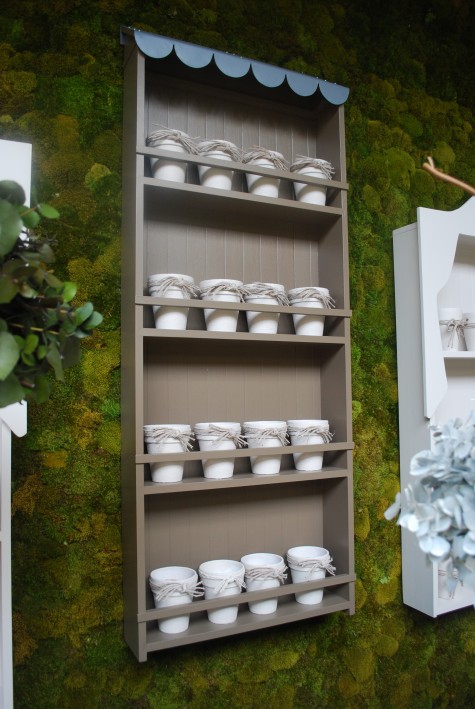 One of the plant theatres got a coat of Belgian chocolate paint.
One of the plant theatres got a coat of Belgian chocolate paint. 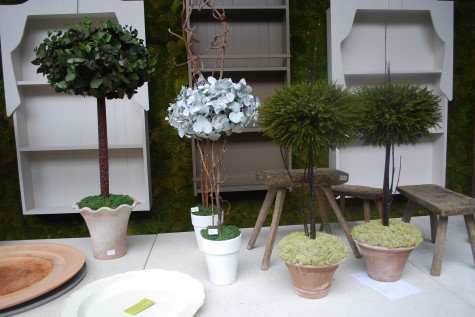 Pam has been making small topiary sculptures from preserved eucalyptus and other preserved greens. The trunks are made from cedar whips, kiwi vine, and fresh blacktwig dogwood. They are great for spots indoors asking for something soft, that will not support plant life. As I have no interest in house plants, these suit me fine.
Pam has been making small topiary sculptures from preserved eucalyptus and other preserved greens. The trunks are made from cedar whips, kiwi vine, and fresh blacktwig dogwood. They are great for spots indoors asking for something soft, that will not support plant life. As I have no interest in house plants, these suit me fine. 